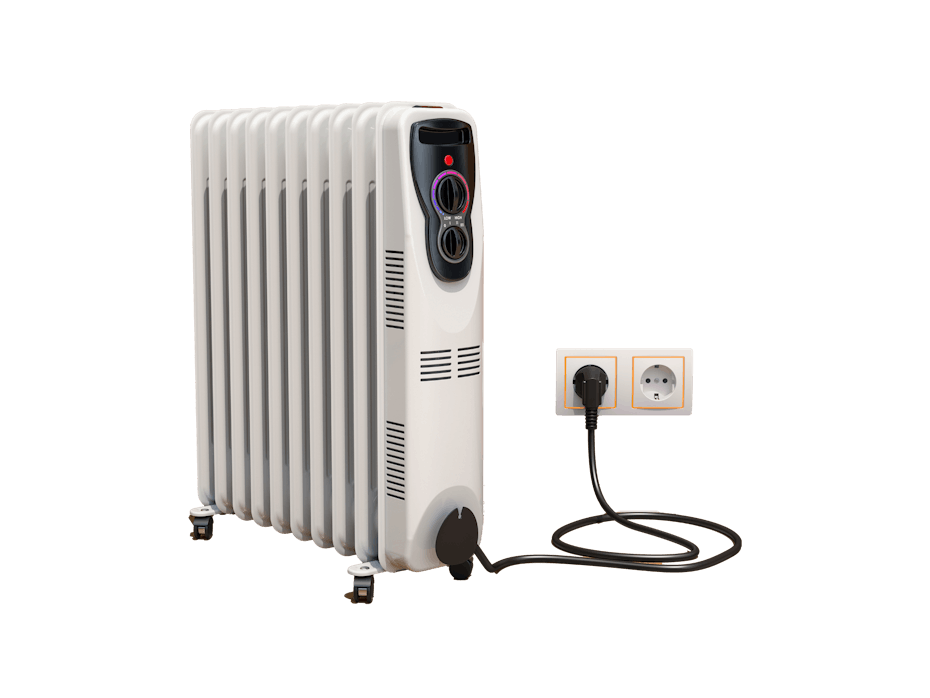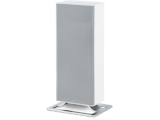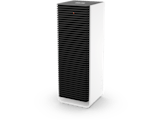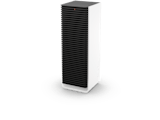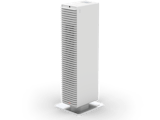Fan heater
Fan heaters use ceramic or wire heating elements to generate cosy warmth, which is distributed by an integrated fan. Depending on the fan heater, they heat either a specific area or a large area. Fan heaters are suitable for supplying heat during the transitional period and wherever selective heat is required, such as under a desk or in a hobby room. Get warm air on cold days and find the right fan heater for you now.
What an electric fan heater can do for you
Electric fan heaters provide an additional heat source so that you can specifically heat colder areas in your flat or house – you get selective heat where it is needed, for example under the desk or in the hobby room.
Fan heaters are usually lightweight and portable. This means you can easily move them from one room to the next to get flexible and mobile heat at the touch of a button.
Modern fan heaters are very energy-efficient thanks to their technology. Fan heaters with a digital thermostat and Auto mode can heat to the exact degree. The Auto mode reaches and maintains the desired temperature precisely and efficiently.
You can heat safely with a fan heater: most heaters have safety functions such as overheating and tilt protection, making them suitable for children's rooms too. As the grille at the front still gets hot, it should not be touched with the hands.
Fan heaters heat the room air quickly and in a targeted manner, creating a cosy warmth in a very short time – perfect for the transitional period when the central heating is not yet running.
Many fan heater models are quiet in operation, making them ideal for use in the bedroom, children's room or office without disturbing you.
Electric fan heaters are very simple to use and easy to operate. They only need to be connected to the power supply and can usually be switched on or off using a switch.
Fan heaters are ideal for holiday homes and holiday flats, as they quickly provide warmth if the central heating is not yet running when you arrive.
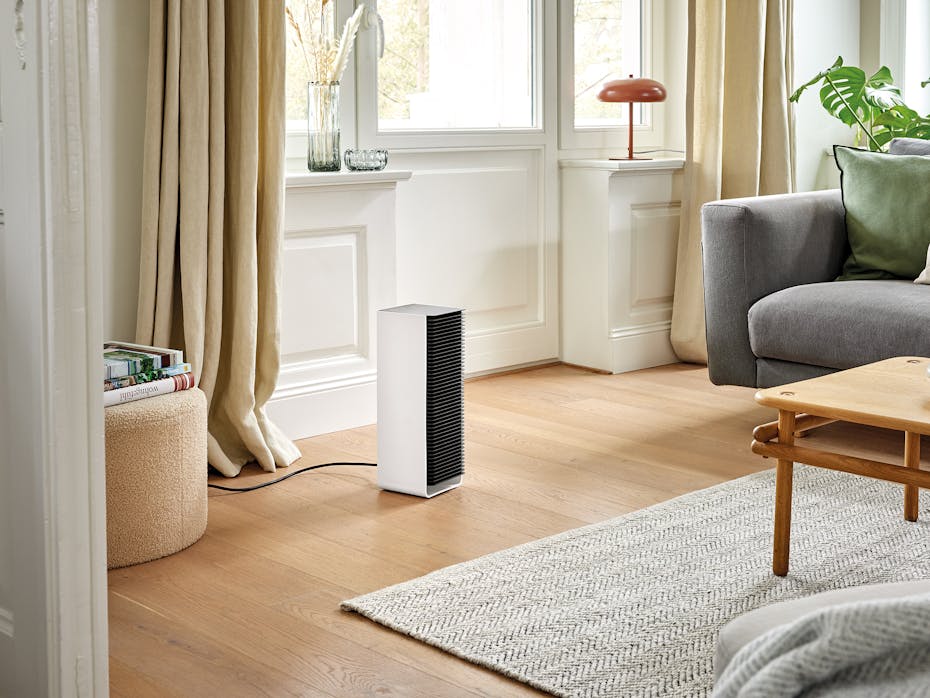
Buying a fan heater: what do you need to consider?
There is a suitable heater for every need. To make the right choice, it makes sense to know in advance what you really need. The most important tip: always pay attention to safety and only buy appliances with tilt and overheating protection.
Not all fan heaters are made for all room sizes, some are more suitable for small rooms and others for large rooms. Make sure you know how many square meters you want to use the appliance in and find out which heater is suitable in your case when buying. Manufacturers usually assume a room height of 2.5 meters.
A heater is suitable for use in many areas such as the living room, children's room, home office, kitchen, bathroom, office, garage, hobby room or as an emergency heater in the event of a central heating failure. It must be noted that when used in the bathroom, protection in accordance with IP21 certification (splash water protection) must be provided.
There are various fan heater technologies: PTC ceramic heaters, heaters with wire heating elements, quartz heaters, oil radiators or infrared heaters. The technology is selected according to individual comfort. It is advisable to test the various technologies in a retail store. When choosing the technology, it is also advisable to consider whether a swing function is available. This helps to distribute the heat better in the room. There are fan heaters with horizontal or vertical and those with three-dimensional swing function.
Power consumption is only particularly high if no attention is paid to when and on which heating level the fan heater is running. Exactly the same amount of electricity is consumed as the power (watts) specified on the fan heater. This means that heaters are not power guzzlers, as they give off the same amount of energy (heat) as they consume. Fan heaters with auto mode are particularly efficient. The Auto mode selects the appropriate output level for the current temperature depending on the desired temperature and thus reaches and maintains the desired temperature precisely and efficiently.
With a fan heater, it is not just the decibel rating that needs to be taken into account, as this is a combination of different frequencies. A frequency can be very annoying even though the decibel rating is within the tolerance range. It is therefore advisable to listen to the fan heater in a quiet environment in a store before buying.
The technical features include the number of heating levels, whether there is an integrated thermostat, whether the fan heater has an auto mode with adaptive heat output, whether there is a remote control or whether the heater even has Wi-Fi and can therefore be controlled via smartphone.
Heater Buying Guide
Our heaters efficiently provide cozy warmth and a comfortable indoor climate. In our video, Nadine explains how to find the perfect heater and what key points you should consider.
The different fan heater technologies
PTC ceramic heater
As the name suggests, ceramic fan heaters use ceramic inserts as heating elements. These heaters draw in cold air, heat it up and release it warm back into the room. Ceramic heating elements have a long service life and do not overheat. This makes them particularly safe and energy-efficient. They are also very quiet in operation. Some PTC ceramic fan heaters also have an additional fan function (fan is running, heating is switched off). This provides a gentle breeze on hot days. Ceramic heaters are ideal for year-round use in living spaces and offices. Due to their usually compact shape, they are also easy to transport and can be carried from room to room. PTC ceramic heaters are also suitable for allergy sufferers as they produce little fine dust when heating.

Fan heaters with wire heating elements
Fan heaters with wire heating elements are among the classic heating technologies. In these devices, a special metal wire, also known as a heating conductor, serves as the heat source. When the fan heater is switched on, an electric current flows through the spirally wound heating wires. The wire spirals are made of resistant metals that heat up when electricity flows through them. The heat generated is blown into the room by a fan in the heater. This warms the surrounding air quickly and evenly. Fan heaters with wire heating elements are ideal for heating cold environments quickly. Wire heating elements are also robust and durable. These heaters are also suitable for mobile applications due to their design. Wire heaters with overheating protection also ensure safe operation of the device.
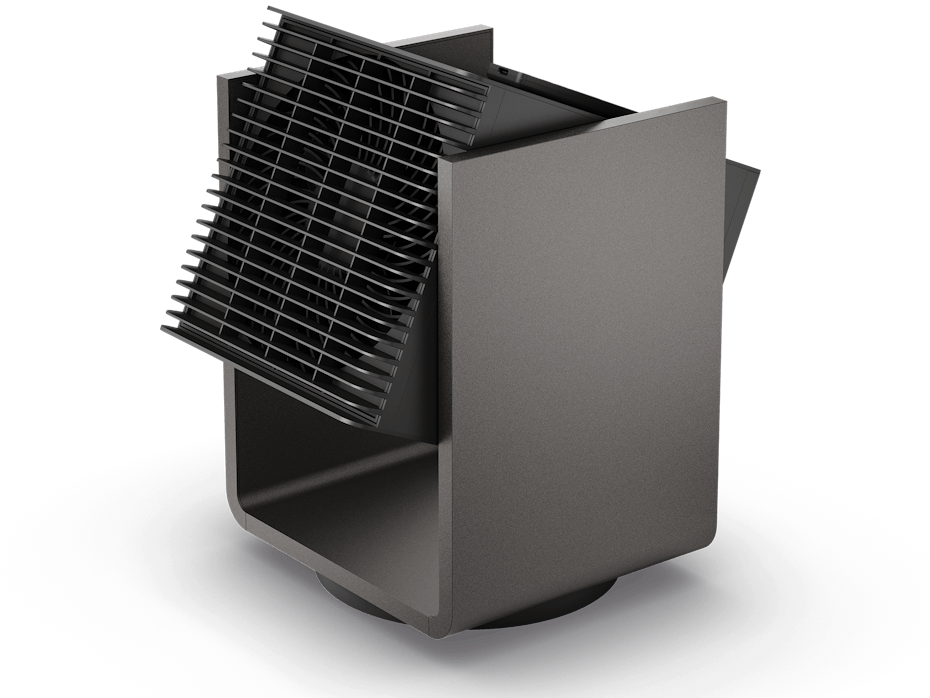
Quartz radiator
Quartz radiators transfer heat to the room in the form of radiation. They work with fine heating wires that are heated up strongly during operation. As a result, they immediately emit noticeable heat. These heaters are particularly effective for spot heating and are suitable for smaller rooms or bathrooms (only IP21 certified devices) to quickly create a cosy feeling. Quartz radiators with overheating protection are also safe to use. Quartz heaters are also compact and easy to transport, but unlike ceramic heaters, they have high operating costs and are less suitable for long-term use.
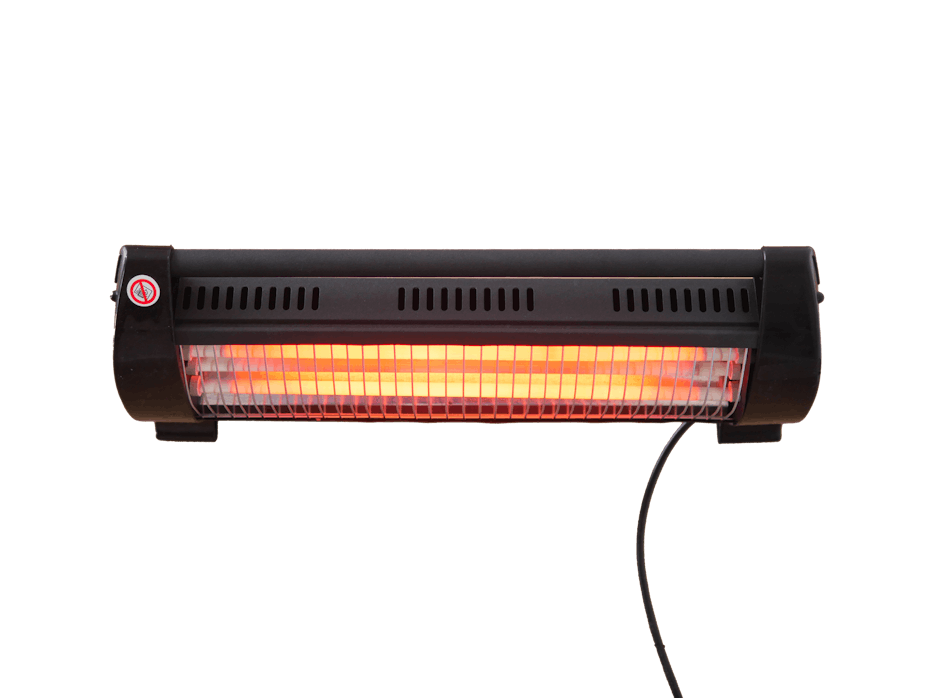
Infrared heating
Infrared heaters work by means of infrared radiation, which heats objects and people in the room directly rather than the air. They radiate the energy evenly. The radiated heat hits surfaces, which then heat up and in turn radiate energy. Infrared heaters are particularly suitable for larger rooms and can also be used outdoors. These types of heaters are recommended for allergy sufferers because they do not work with air circulation and do not stir up much dust in the flat or house.

Oil radiator
These heaters ensure particularly even heat distribution. Oil radiators use electricity to heat a thermal oil circulating inside them and the resulting heat is then radiated into the room. Oil radiators are less compact but can still be transported easily and flexibly thanks to their castors. Due to their high operating costs, oil radiators are particularly suitable for short-term operation in smaller rooms. Like ceramic heaters, oil-filled radiators have overheating protection, which ensures a high level of safety.
